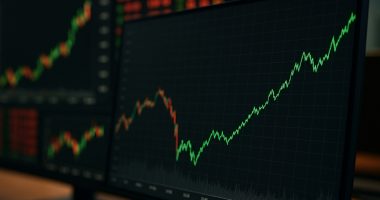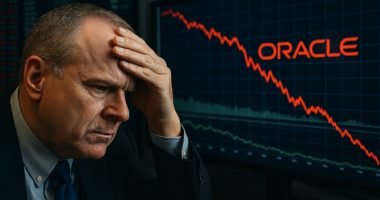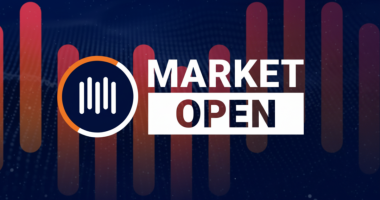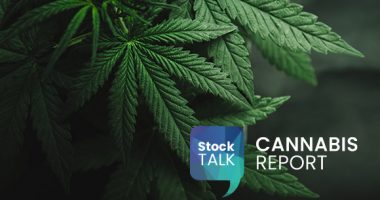- Santa Claus Rally is a term used by the stock market to describe a phenomenon noticed for the five days after Christmas and the two days of the New Year
- The trend dates back to the 1900s when Sidney B. Wachtel presented his analysis in the Journal of Business of the University of Chicago
- Wachtel’s 1942 article is titled, “Certain Observations on Seasonal Movements in Stock Prices”
- Yale Hirsch, founder of the Stock Traders Almanac coined the term, “Santa Claus Rally” in 1972
The following is a transcription of the above video:
As December shifts into full swing, you may be hearing the term Santa Claus rally.
Although you may be picturing a bunch of Santas driving downtown in their hot rods, it’s a term used by the stock market to describe a phenomenon noticed just after Christmas.
Santa Claus Rally time period
A Santa Claus rally is a jump in stock prices observed in the final five trading days of the year, typically starting a day after Christmas and going into the first few trading days of the new year.
The trend dates back to the 1900s when Sidney B. Wachtel presented his now termed “Santa Rally Analysis” in the Journal of Business of the University of Chicago in 1942. The article, entitled “Certain Observations on Seasonal Movements in Stock Prices,” found that all research on the subject, up to 1925, proved quite conclusively that such movements were definitely non-existent.
Naturally, this made Wachtel, curious, so he dug a little deeper.
Wachtel found evidence from the Dow Index from 1927 to 1942 in support of a December January climb of 5 to 10 per cent in the 11 of 15 years. The declines in the other three years were not more than 4 per cent. He concluded that the seasonal curve is well worth watching when formulating actual investment policy.
Fast forward to 1972 when the actual term, “Santa Claus Rally,” was coined by Yale Hirsch, founder of the Stock Trader’s Almanac. The Stock Trader’s Almanac compiled S&P 500 data from 1950 to 2020 that showed that Santa Claus rallies occurred an impressive 57 times, which is 81 per cent yielding average growth of 1.3 per cent, a maximum decrease of about 4 per cent in 2000, and a maximum gain of over 7 per cent, 1973 and 2009.
Jeffrey Hirsch continued this sentiment, noting the seven-day time span has collectively offered up a positive return 79.2 per cent of the time through 2012 in his book, “The Little Book of Stock Market Cycles.”
An example of a Santa Claus rally was in 2008. A seven-day trading period starting Dec. 24, 2008, and ending Jan. 5, 2009, saw the S&P 500 gain 7. 36 per cent.
Just for clarification, Wachtel’s analysis featured the Dow, while Yale Hirsch’s featured the S&P 500.
Today, the Santa Rally includes the Dow, the NASDAQ and the S&P 500.
So why does it happen?
So why does a Santa Claus Rally happen’?
The Santa Claus Rally happens after Christmas, so we can’t attribute it to holiday spending.
But, here are some hypotheses over why the up-bump may occur. Some of the hypotheses include after-Christmas spending, institutional investing, tax-loss harvesting and year-end bonuses. But my favourite is a little bit of the holiday magic, which is believing makes it so. The human psychology of the expectation of stocks rising.
The Santa Rally’s ‘holiday magic’
People expect them to rise, and they want to benefit from the rally, so they buy, causing the rally. So, is Santa Claus real in the stock market? The Santa Rally may fall into the file with Sell in May and Go Away, the January Effect, the Super Bowl Indicator and the Presidential Election Market Cycle, just to name a few.
There are proponents for all sides. The original Santa Claus Rally analysis does not meet the basic standard of academic rigor, but offers a great starting point for further analysis. A study published in the Journal of Financial Planning in 2015 concluded that the Santa Effect was real.
And, who doesn’t want to believe in Santa?
There is still not enough data to act on the Santa Claus Rally all on its own. Continuing to read, research and investigate is the practice of the informed investor.
For a deeper dive into the Santa Rally, be sure to check out Trevor Abes’s article, “How to capitalize on the Santa Claus Rally” at the Market Herald Canada.
The material provided in this article is for information only and should not be treated as investment advice. For full disclaimer information, please click here.
Note: Special thanks to the Vancouver Christmas Market, for on location shooting.



